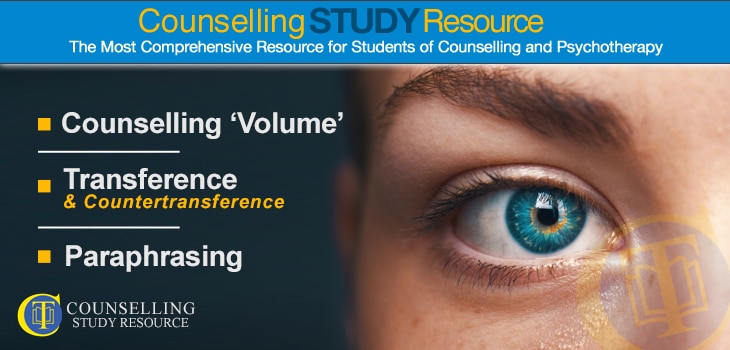In this third episode of the Counselling Tutor Podcast, Ken Kelly and Rory Lees-Oakes explore how to turn down our counselling ‘volume’. ‘Theory with Rory’ looks at transference and countertransference; and in the skills section, Ken examines paraphrasing. In a new slot, ‘Ask Ken and Rory’, the presenters look at the challenge of showing unconditional positive regard (UPR).
Turning Down Our Counselling ‘Volume’
Following a question in the Facebook group about how not to be drawn into counselling family and friends, Rory and Ken use a range of personal experiences and anecdotes to illustrate how they ‘turn down the volume’ on their counselling skills in everyday life.
Carl Rogers held that the person-centred approach to counselling is not so much a way of doing as a way of being. Counselling training can change us as people, but we need to know when to turn down our counselling volume. It would not be healthy or developmental for us to spend all our time in other people’s frames of reference; nor would it be ethical to counsel people who had not asked for counselling and with whom we had not contracted.
Transference and Countertransference
In transference – a concept first introduced by Sigmund Freud – people become ‘biological time-machines’, transferring their feelings about a past relationship to a new relationship in the present. Transference:
- is subconscious – so those experiencing it may not be aware of it
- transfers the relationship, not the person
- is at least partly inappropriate to the present situation
- transfers only one aspect of the relationship, rather than the whole thing.
While transference is a central concept in psychodynamic work, it is considered less important to the therapy itself in humanistic counselling. However, we must be aware of the possible dangers of the client experiencing transference towards us, as this can affect the counselling relationship, the client’s journey and our perceptions of the client.
If transference is the redirection of the client’s feelings about a past relationship towards their present relationship with their therapist, countertransference is the reverse: the redirection of the counsellor’s feelings from the past towards the client.
Rory identifies that our particular concern as counsellors is with unchecked transference leading to countertransference within the counselling relationship. This muddies the relationship, as the therapist may inadvertently treat the client as if they were someone else. He provides an example of tutor–student transference from his own experience, illustrating how a potential problem could occur, and how he resolved this in a person-centred way.
Ways to identify and deal with transference and countertransference include being aware of danger signs in clients, monitoring self, and taking relevant material to supervision. Support from your supervisor can enable you to:
- better understand the therapist–client relationship
- be more effective in working with the client’s process
- anticipate potential traps and potholes
- improve boundary maintenance.
Self-awareness and willingness to work on personal development are key. So the next time you have a strong reaction to a person you have just met, ask yourself: ‘What aspects of the person’s behaviour are linked with a relationship in my past?’
The Skill of Paraphrasing
Paraphrasing involves reflecting your understanding of the client material – the ‘essence’ of what has been said – back to them in your own words. It is similar to the skill you would use when writing notes in class.
Using a simulated skills session, Ken illustrates the importance of cutting through the story, observing body language, and focusing on the underlying emotions that the client is bringing – in Rogers’ words, noticing ‘the music behind the words’.
Good paraphrasing:
- helps the client feel heard and understood
- builds and deepens the empathic relationship between counsellor and client
- can invite the client to focus on a specific part of their material
- allows us, as counsellors, to check our understanding of what the client is bringing.
Free Handout Download
What is Transference and Countertransference?
UPR and Judgement
Showing UPR towards clients does not mean we must approve of all their behaviour: in Rory’s words, ‘we must separate the sin from the sinner’. It is also important to remember that our truth – which is a product of our own self-concept – is not necessarily our client’s truth. The Roman playwright Terence said: ‘I am human; I consider nothing human alien to me.’
